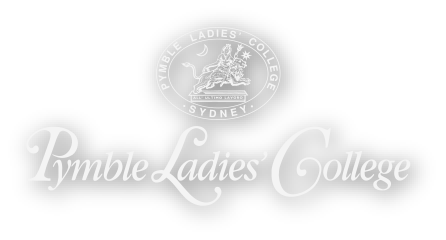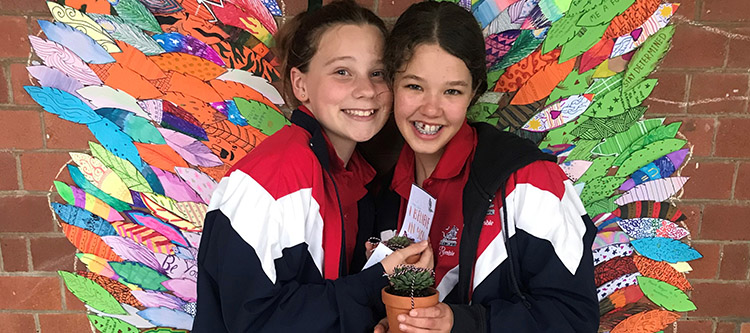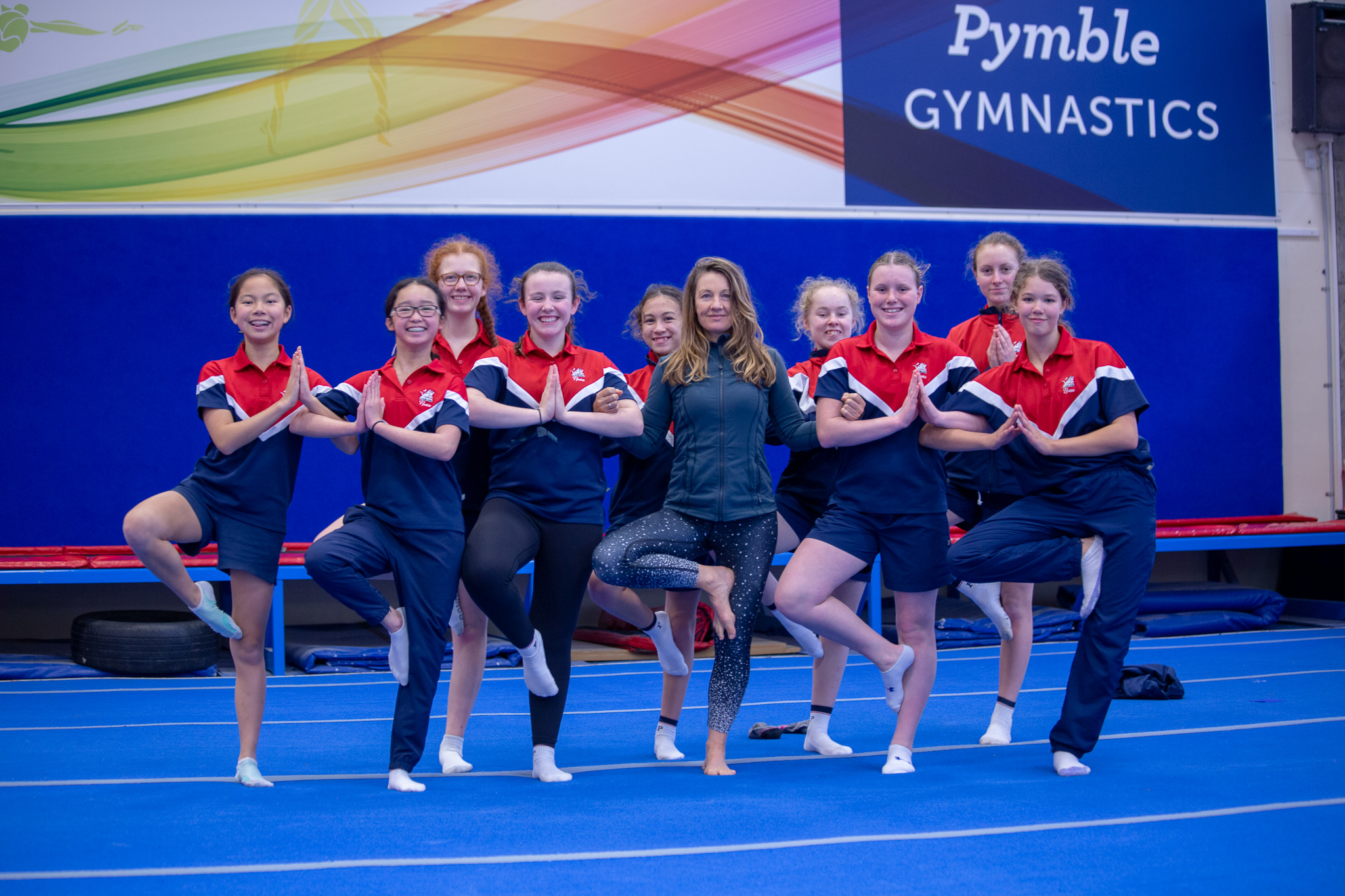Five Ways to Wellbeing: The Middle School Wellbeing Day
Friday 9 October, 2020
Pymble Ladies’ College Middle School implemented Wellbeing Day in 2018 to help promote students’ social and emotional skills. To positively impact students’ experience of wellbeing, the School uses a flexible, simple and useful framework known as the Five Ways to Wellbeing.
In Edition 3 of Illuminate, Mrs Jacinta Wells, 2019 Deputy Head of Middle School – Year 8, wrote about the theory and research behind this holistic approach to the girls’ health.
The Five Ways to Wellbeing framework is an evidence-based approach that aims to improve personal wellbeing and its multifaceted design aligns with the College’s aim to build wellbeing across students’ emotional, social, physical, academic and spiritual domains.
What is wellbeing?
According to the World Health Organisation (2019) wellbeing is ‘a state in which the individual realises his or her own abilities to cope with the normal stresses of life, can work productively and fruitfully and is able to make a contribution to his or her own community’. Similarly, the Institute of Wellbeing (2017) adds wellbeing is a combination of the ‘positive and sustainable characteristics which enable individuals and organisations to thrive and flourish’.
With these definitions of wellbeing in mind, Mrs Victoria Harrison, Head of Learning Area PDHPE, and I embarked upon creating a framework that provided a shared understanding in Middle School: of how we could promote wellbeing and embed a consistent language around social and emotional skills.
Why are wellbeing frameworks important?
According to the National Framework for Health Promoting Schools (not dated), schools must promote wellbeing while simultaneously providing high-quality and challenging learning experiences for students. A focus on wellbeing has substantial benefits, including:
- Pro social behaviours
- Retention rates
- Teacher wellbeing
- Student wellbeing
- Social and emotional skills
- Academic results, engagement and participation
In addition to impacting on the areas above, by supporting students to develop their proactive skills in wellbeing we contribute to a whole school environment that promotes preventative aspects of wellbeing. These include self-regulation and self-awareness which means creating a proactive culture, rather than being solely reactive to wellbeing concerns.
This is valuable because schools need to be building everyone’s resources regarding psychological, social and physical resilience when faced with challenges. Thus, we aim to contribute to a school climate that promotes optimal functioning in students and sustainable wellbeing models.
What are the Five Ways to Wellbeing?
Connect
Connect is all about building relationships with others to support and strengthen oneself every day. Students are encouraged to talk, listen, be present and feel connected. The benefits associated with Connect include fostering friendships and relationships. Friendship is one of the highest positive correlations associated with self-rated happiness. People with stronger social relationships have a 50 per cent increased likelihood of survival from conditions including coronary vascular disease and cancer (Holt-Lunstad, Smith and Layton, 2010).
In Middle School, connections are seen in the pastoral structure with students coming together in a face to face environment three times a weekly through the Connect Program. Middle School is all about promoting friendships, a sense of belonging and building new relationships. Fun Fridays are particularly valued by the students as a student-run session where girls engage in a variety of activities which have included cookie decorating, skipping competitions and arts and crafts. In addition, the 2019 #letschallkaboutmentalhealth initiative was an opportunity for all Middle School students to write messages of hope to friends and family who have been affected by wellbeing concerns and raise understanding and promote a culture of support around mental health.
Keep Learning
Keep Learning encourages students to embrace new experiences, to recognise new opportunities and to surprise themselves. The benefits associated with lifelong learning include positive effects on wellbeing, reports of greater life satisfaction, optimism and efficacy (Foresight Mental Capital and Wellbeing Project, 2008, p.20).
Middle School students have a busy and diverse academic program which that encourages the girls to keep every door open and explore areas of scholarship that are both intellectually challenging and fulfilling. Examples of new experiences in learning in the Middle School include Challenge Café, Hypatia and the Sokratis program.
Be Active
Be Active encourages students to do what they can, enjoy what they do and move their bodies. Regular physical activity results in a greater sense of wellbeing, stress reduction and lower rates of anxiety. It also protects against depression (Biddle & Ekkekakis, 2005). In Middle School, we have seen great interest in promoting healthy relationships and reducing the influence of digital devices.
The Middle School Leaders run lunch time activities such as Thrilling Thursdays and sporting competitions which to encourage students to get up and be active at lunch and build new bonds and friendships.
Take Notice
Take Notice encourages students to remember the simple things that give them joy. To be aware of new sights, smells and sounds and how they respond to their environment. Being mindful and focusing on the here and the now helps promote a sense of calm and can reduce stress. Being in a state of mindfulness is a positive predictor for mental wellbeing (Brown & Ryan, 2003).
Students are encouraged to Take Notice through Wellbeing Wednesday where students engage in reflective practices such as journaling, yoga or engaging in a guided meditation through their Connect Program. In addition, during Mental Health Month in October, Middle School students engaged in Wellbeing Challenges for a week. These activities were designed to develop strategies to assist managing personal wellbeing and to support those struggling with mental health concerns.
Give
Give encourages students to be generous with their time, their words and their presence. It promotes the idea of doing something kind for others such as saying “thank you”, smiling and helping someone. It also encourages our girls to appreciate the role they can play in the wider community. Research shows that engaging in acts of kindness is associated with an increase in wellbeing and positive self-esteem (Lyubomirsky, Sheldon & Schkade, 2005).
In Middle School, we have built a strong culture of kindness and encourage students to engage in random acts of kindness. During Term 3, we promoted a week of students displaying authentic and genuine kindness to each other. Students can be nominated for their kindness which is recognised and celebrated at year assemblies with a Values Award.
Click here to read the full article, including research and findings, on page 34 in Edition 3 of Illuminate.




